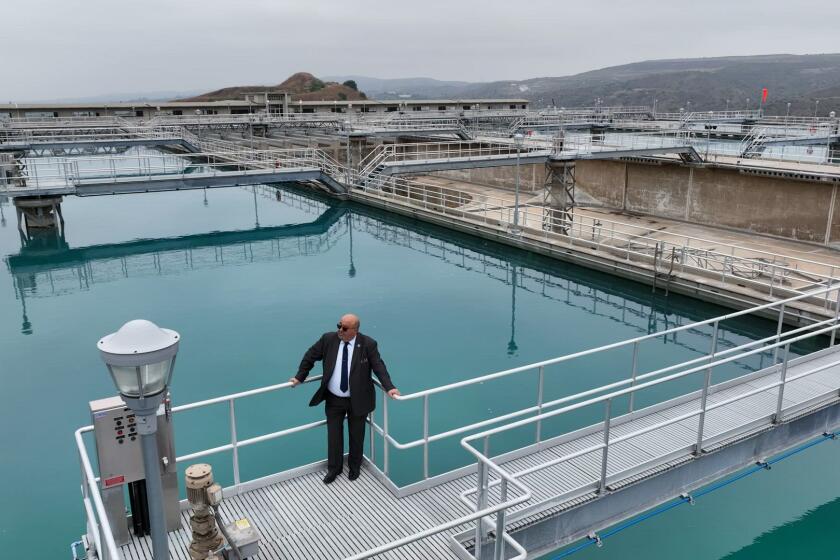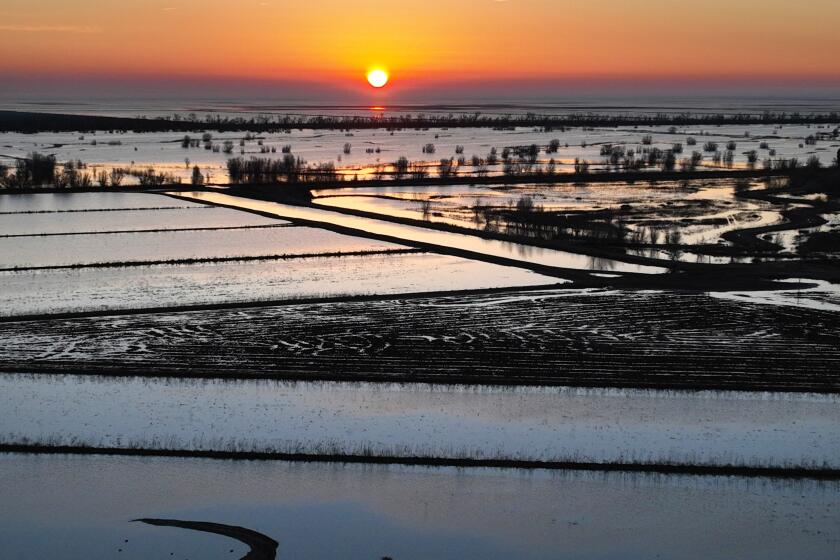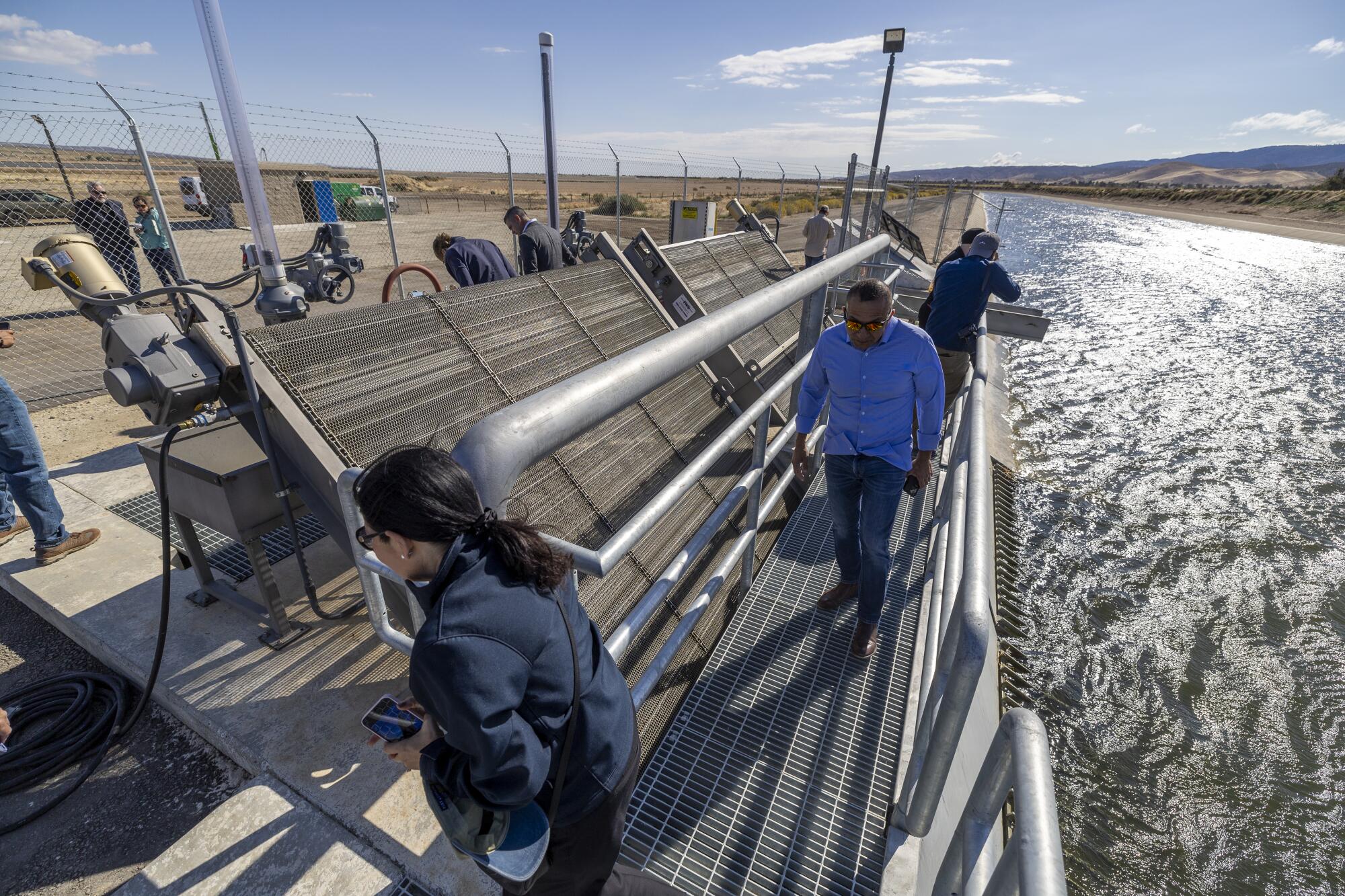
- Share via
A solution to help bolster Southern California’s water outlook during future droughts is taking shape in the Mojave Desert. Water transported in canals and pipelines has begun flowing into a series of basins carved into the desert, filling a large underground reservoir that will be available to draw upon in dry times.
The facility, called the High Desert Water Bank, started taking in supplies from the State Water Project last month. Water diverted from the East Branch of the California Aqueduct has been flowing through a 7-foot-wide pipeline and gushing into one of the basins, where it gradually percolates into the desert soil and recharges the groundwater.
Newly drilled wells will allow for water to be pumped out of the aquifer when needed to supply cities and suburbs throughout Southern California.
The Metropolitan Water District of Southern California is spending $211 million to build the facility. The district’s officials say the project is a vital step in improving the region’s water infrastructure to adapt to climate change.
“We know that climate change will bring more of the dramatic swings between wet and dry that we saw over the last few years, so we must take every opportunity to store water when it is available,” said Adán Ortega Jr., chair of the MWD board.
Aggressive and impactful reporting on climate change, the environment, health and science.
The agency already stores water underground in other areas, but the High Desert Water Bank represents the MWD’s largest investment in groundwater storage to date.
The district developed the facility working with the Antelope Valley-East Kern Water Agency, which owns the property near Lancaster.
After three years of construction, the initial phase of the project has enabled the district to take advantage of the plentiful water from this year’s historic storms. And more water could be coming with the current strong El Niño, which has brought forecasts of another wet winter.
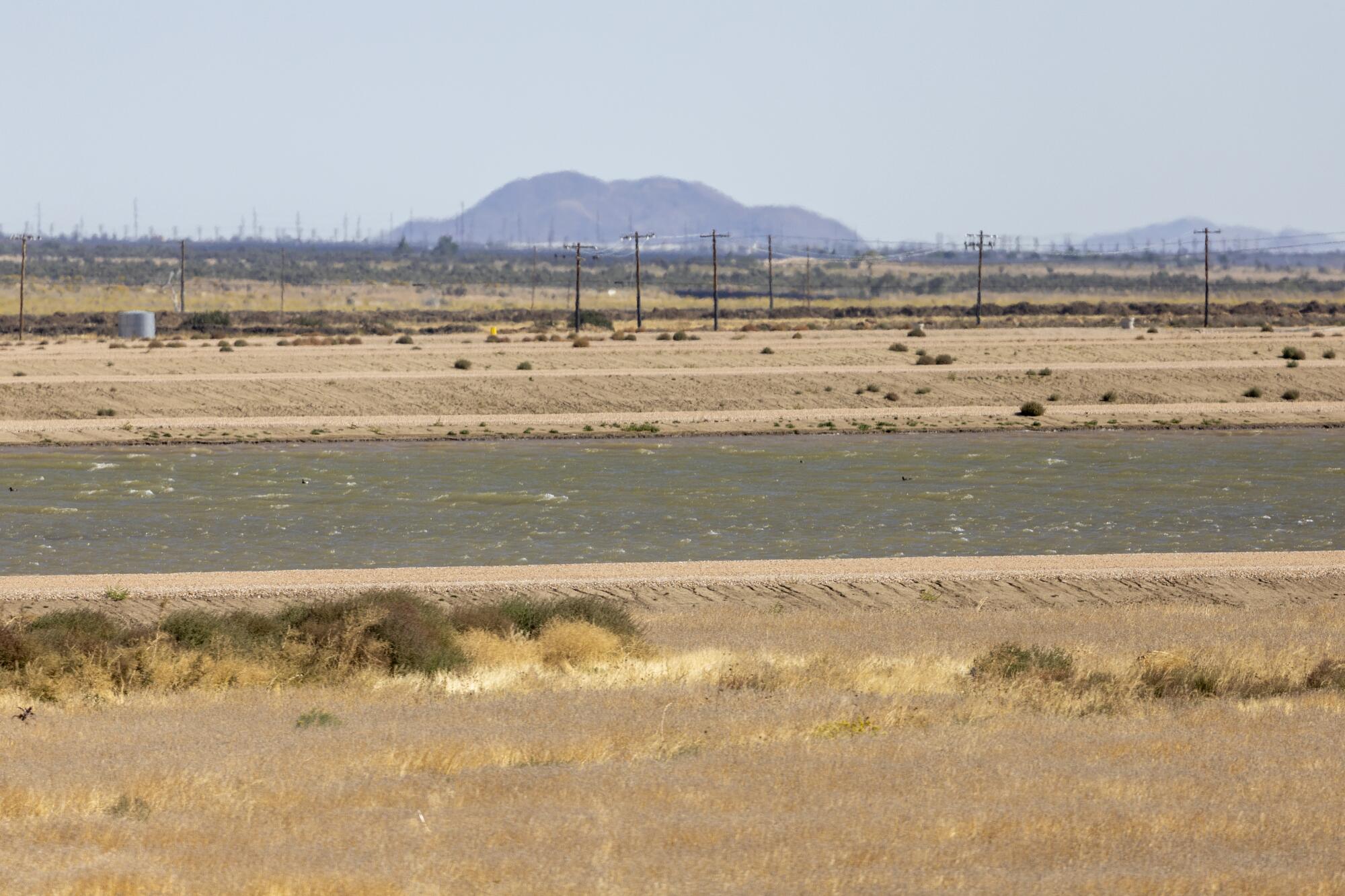
There is enough aquifer space in the Antelope Valley groundwater basin to store up to 280,000 acre-feet of water, comparable to the capacity of Castaic Lake and nearly four times the size of Big Bear Lake.
The facility, which is scheduled to be fully built in 2027, will enable the MWD to put in or withdraw up to 70,000 acre-feet of water per year — enough for about 210,000 average households.
With this much additional storage in place, Ortega said, “we can confront the next drought with more confidence.”
By increasing the district’s ability to store and withdraw water along the aqueduct, the project provides the state’s largest urban water supplier greater flexibility and a valuable backup supply to adapt to more extreme cycles of drought and wet weather.
MWD head Adel Hagekhalil wants Southern California to adapt to climate change, becoming more resilient and more self-reliant on local water sources.
The district’s managers said having the water bank will ensure more reliable supplies during severe droughts like the one during the last three years, when supplies from Northern California were drastically cut, forcing mandatory water restrictions for nearly 7 million people.
By banking more backup supplies, the project is also intended to help Southern California reduce its reliance on the overburdered Colorado River, where depleted reservoirs remain at low levels.
“When drought hits California, we can turn to this stored water, instead of drawing more heavily on our Colorado River supplies,” MWD General Manager Adel Hagekhalil said.
Hagekhalil and other officials spoke last week at an event inaugurating the facility. As they spoke beneath a tent, water gushed into the pond behind them, creating a fountain-like upwelling in the wind-rippled surface.
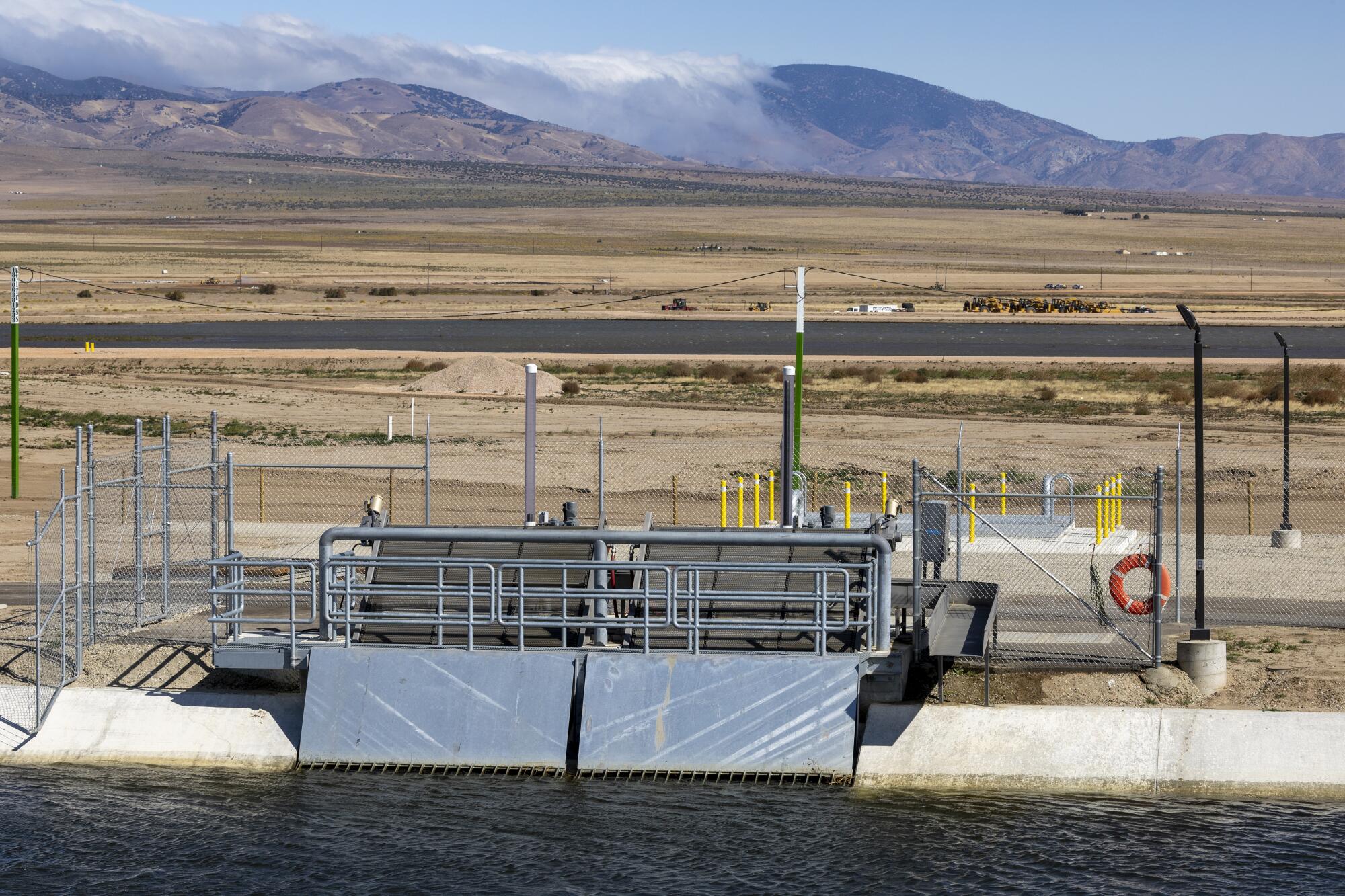
“Climate change is upon us,” Hagekhalil said. “We need to have creative new tools, holistic solutions.”
Hagekhalil noted that the district is developing a new climate adaptation master plan, focusing on building more flexibility into the region’s water system to improve the reliability of supplies. He said storing more water underground will be one piece of the district’s climate adaptation efforts in the coming years, along with recycling wastewater and cleaning up contaminated groundwater.
“It’s finding new ways to take water when we have it during wet years and put it in the ground, so we can have access to it when we have dry conditions,” Hagekhalil said. “This is the future of water management in the 21st century.”
Colorado River in Crisis is a series of stories, videos and podcasts in which Los Angeles Times journalists travel throughout the river’s watershed, from the headwaters in the Rocky Mountains to the river’s dry delta in Mexico.
Water has been flowing into the facility from the California Aqueduct since mid-September. By the end of the year, the district estimates it will have stored about 12,000 acre-feet in the groundwater basin, enough to meet the annual needs of about 36,000 average households.
Managers of the Antelope Valley-East Kern Water Agency said this part of the High Desert is well-suited for storing water underground. The 1,300-acre property includes vacant land and farm fields that were left dry and abandoned years ago.
As work crews have built recharge basins, they have removed old irrigation systems.
Farms in the valley have produced a variety of crops, such as hay, peaches, carrots and onions, but falling groundwater levels and increased costs for imported water have led to a decline in agriculture. The Antelope Valley groundwater basin is managed under a 2015 court ruling, which regulates pumping to manage supplies and address the long-term declines in aquifer levels.
“Our groundwater supplies, they’ve diminished. And thank goodness for these water banks,” said George Lane, president of the Antelope Valley agency’s board. “It will raise the water table. … It was completely overdrafted for a number of years.”
In parts of California’s Central Valley, farmlands are being used to soak up storm water and replenish depleted groundwater.
The Metropolitan Water District will be able to recover 90% of the water it stores at the site, paying the Antelope Valley agency when it withdraws water.
Evaporation losses and water that will be left underground will account for the remaining 10%, said Matthew Knudson, general manager of the Antelope Valley-East Kern Water Agency.
So far, crews have finished building six recharge basins to receive water. When finished, the water bank will have 26 recharge basins covering about 600 acres, and 27 wells for recovering water from the aquifer.
The groundwater is tainted with toxic arsenic, so the project will also require building a facility to treat the water before sending it flowing back into the California Aqueduct.
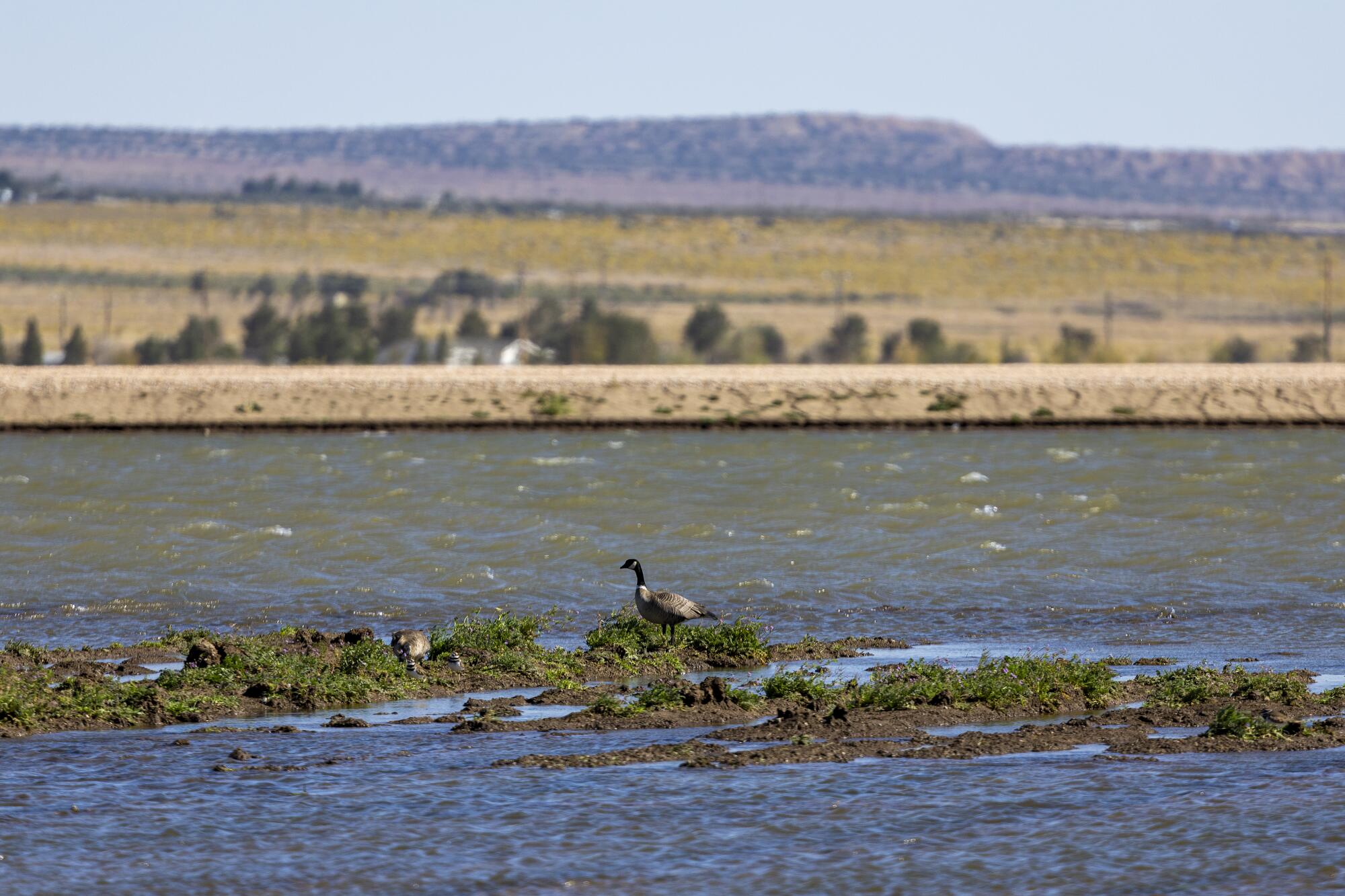
The agencies plan for water levels to rise and fall as supplies are deposited and withdrawn. Groundwater levels at the site now range from about 260 feet to 280 feet underground, and will be allowed to rise as high as 75 feet underground at full capacity.
When water is pumped back into the aqueduct, it will flow into the MWD’s delivery system. The district supplies drinking water for 19 million people in six counties from San Diego to Ventura.
Ortega praised the agencies’ collaborative efforts on the project, saying the High Desert Water Bank is an example of “the kinds of partnerships that we’re going to need to establish throughout the state as climate change forces us to become more interdependent.”
One big plus, Ortega said, is that the underground storage facility is coming online “in time to take advantage of this historically wet year.”
Toward a more sustainable California
Get Boiling Point, our newsletter exploring climate change, energy and the environment, and become part of the conversation — and the solution.
You may occasionally receive promotional content from the Los Angeles Times.

